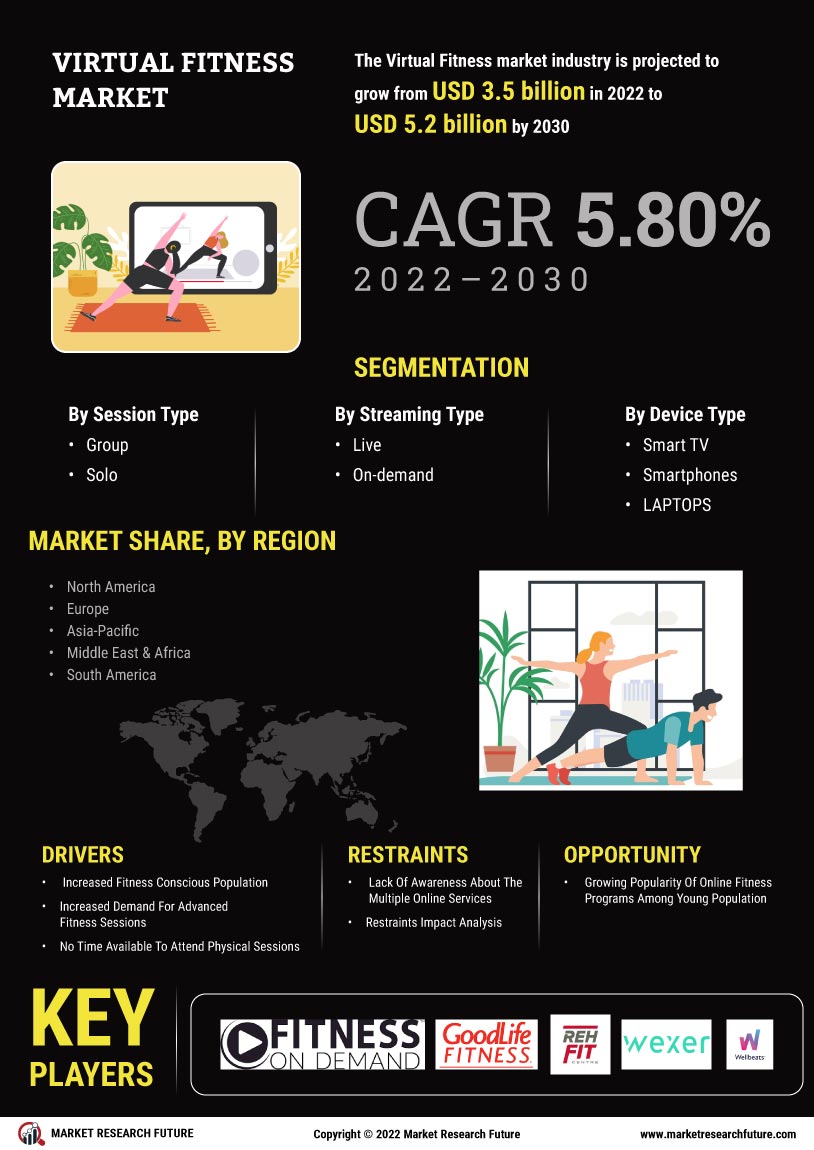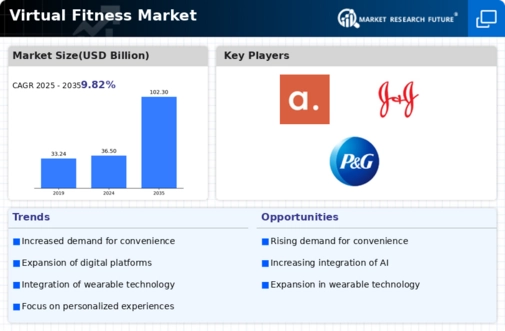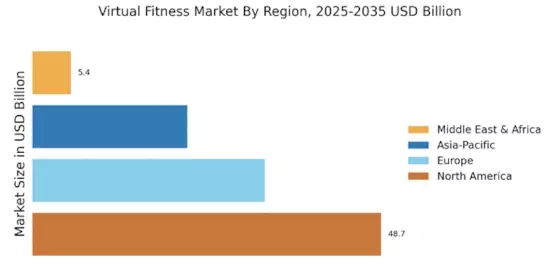The Virtual Fitness Market is currently characterized by a dynamic competitive landscape, driven by technological advancements and shifting consumer preferences towards at-home fitness solutions. Major players such as Peloton (US), Nike (US), and Zwift (US) are strategically positioning themselves through innovation and partnerships, thereby enhancing their operational focus. Peloton (US) continues to leverage its strong brand identity and community engagement, while Nike (US) emphasizes its digital transformation initiatives to integrate fitness technology with its apparel offerings. Zwift (US), on the other hand, capitalizes on the growing popularity of gamified fitness experiences, which collectively shapes a competitive environment that is increasingly reliant on user engagement and technological integration.
In terms of business tactics, companies are increasingly localizing their manufacturing and optimizing supply chains to enhance responsiveness to market demands. The competitive structure of the Virtual Fitness Market appears moderately fragmented, with a mix of established brands and emerging players. This fragmentation allows for diverse offerings, yet the collective influence of key players like Adidas (DE) and Les Mills (NZ) is significant, as they drive innovation and set industry standards.
In September 2025, Peloton (US) announced a partnership with a leading health tech company to integrate advanced biometric tracking into its fitness platform. This strategic move is likely to enhance user experience by providing personalized insights, thereby reinforcing Peloton's commitment to innovation and customer engagement. Such partnerships may also position Peloton favorably against competitors by offering unique features that appeal to health-conscious consumers.
In August 2025, Nike (US) launched a new virtual training program that utilizes augmented reality to create immersive workout experiences. This initiative not only showcases Nike's commitment to digital innovation but also reflects a broader trend towards integrating cutting-edge technology into fitness solutions. By enhancing user interaction through augmented reality, Nike (US) appears to be setting a new standard for virtual fitness experiences, potentially attracting a younger demographic.
In July 2025, Zwift (US) expanded its platform to include a new social fitness feature that allows users to connect and compete with friends in real-time. This strategic enhancement is indicative of a growing trend towards community-driven fitness solutions, which may foster greater user retention and engagement. By prioritizing social interaction, Zwift (US) is likely to differentiate itself in a crowded market, appealing to users seeking a more connected fitness experience.
As of October 2025, current competitive trends in the Virtual Fitness Market are heavily influenced by digitalization, sustainability, and the integration of artificial intelligence. Strategic alliances are increasingly shaping the landscape, as companies recognize the value of collaboration in enhancing their technological capabilities. Looking ahead, competitive differentiation is expected to evolve, with a notable shift from price-based competition towards innovation, technology, and supply chain reliability. This evolution suggests that companies that prioritize these aspects will likely emerge as leaders in the Virtual Fitness Market.


















Leave a Comment